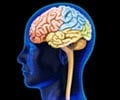A faster test to diagnose fatal brain conditions such as mad cow disease in cattle and Creutzfeldt-Jakob disease in humans could be on the anvil.

“Although relatively rare in humans and other animals, prion diseases are devastating to those infected and can have huge economic impacts,” says Anthony S. Fauci, M.D., director of NIAID. “Scientists have promising concepts for developing therapies for people infected with prion diseases, but treatments only are helpful if it is known who needs them. This detection model could eventually bridge that gap.”
Prion diseases are primarily brain-damaging conditions also known as transmissible spongiform encephalopathies. They are difficult to diagnose, untreatable and ultimately fatal. A key physical characteristic of these diseases is dead tissue that leaves sponge-like holes in the brain. Prion diseases include mad cow disease, or bovine spongiform encephalopathy in cattle; scrapie in sheep; Creutzfeldt-Jakob disease in humans; and chronic wasting disease in deer, elk and moose. For more information about NIAID research on prion diseases, visit the NIAID Prion Diseases portal.
Currently available diagnostic tests lack the sensitivity, speed or quantitative capabilities required for many important applications in medicine, agriculture, wildlife biology and research. Because prion infections can be present for decades before disease symptoms appear, a better test might create the possibility for early treatment to stop the spread of disease and prevent death.
Now, a blending of previous test concepts by the NIAID group has led to the development of a new prion detection method, called real time quaking induced conversion assay, or RT-QuIC. This approach is described in a paper now online in the open-access journal PLoS Pathogens. Byron Caughey, Ph.D., led the study at NIAID’s Rocky Mountain Laboratories in Hamilton, Mont.
Scientists believe disease-causing prions are abnormal infectious clusters of prion protein molecules. Normally, prion protein molecules are unclustered, harmless and found in every mammal. In a process not fully understood, abnormal infectious clusters develop and can convert normal prion protein molecules into the infectious prion form; these clusters tend to gather in the brain. Ongoing replication allows the disease to spread and damage the brain.
Advertisement
The new assay can detect when miniscule amounts of infectious prions initiate the conversion of large amounts of normal prion protein into an abnormal form in test-tube reactions. By comparing the extent to which different samples can be diluted and still initiate conversion, scientists can estimate the relative infectious concentrations in the original samples. In their study, the NIAID scientists used RT-QuIC to detect prion infections in deer known to have chronic wasting disease and sheep known to have scrapie. In scrapie-infected hamsters, they found surprisingly high levels of prions in nasal fluids, pointing to such fluids as possible sources of contagion in various prion diseases.
Advertisement
NIAID conducts and supports research — at the National Institutes of Health, throughout the United States, and worldwide — to study the causes of infectious and immune-mediated diseases, and to develop better means of preventing, diagnosing and treating these illnesses.
Source-Medindia







